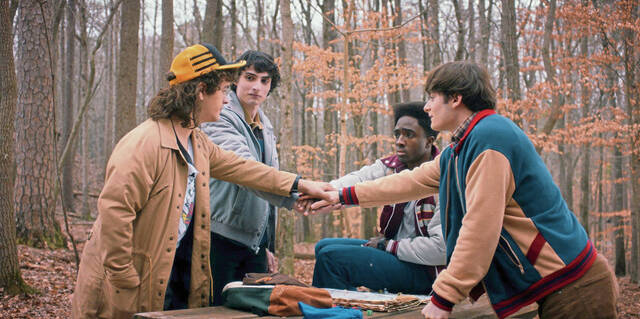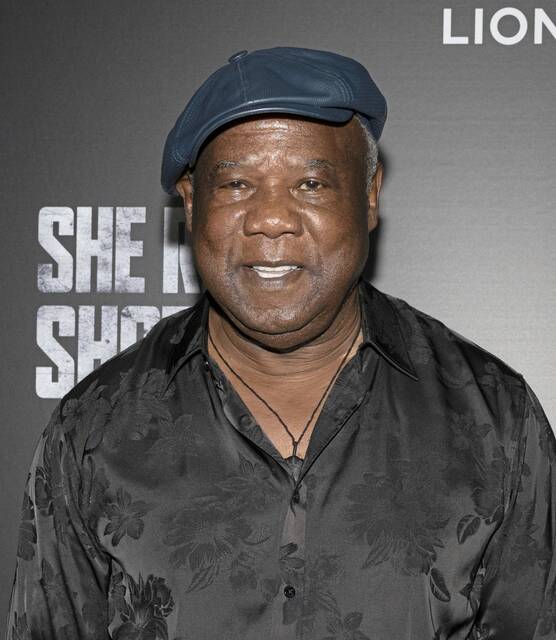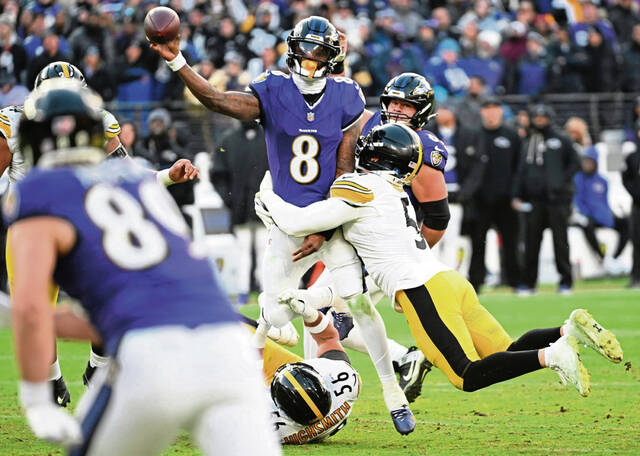Anthony Bourdain spoke about Detroit as a place with an authenticity and attitude that impressed even a globe-trotting food star.
“I’d love to be able to say that I came from Detroit,” he told the Free Press in 2016 while in town for a speaking tour. “That would be like the coolest thing I could ever say.”
Bourdain, who died of suicide last year, left a legacy of affection and goodwill toward Detroit — and one last gift to a city he loved. A four-part documentary series on the Motor City that he executive produced is all but finished, and now it’s in search of a network or streaming home.
Bourdain’s longtime producer Lydia Tenaglia has been working since January to find a buyer to bring the four hours of programming to viewers.
Tenaglia describes the show as a “passion project” for Bourdain, the chef-turned-TV personality who brought remarkable depth of thought to culinary-themed programming. The rough-cut version, which blends new interviews and archival footage, is a vivid exploration of events that shaped Detroit.
Final chapter
This limited series, in some ways, represents a final chapter of Bourdain’s creative vision. It also hints at how his career might have expanded if he’d kept pursuing his other interests, which included American history.
“My determination to get a home for this project has not waned in the slightest. I’m really focused on getting it out there,” says Tenaglia. “It’s a really beautifully executed piece of television.”
The journey of the documentary stretches back to “Once in a Great City: A Detroit Story,” the acclaimed 2015 book by Pulitzer winner David Maraniss. A gripping saga of the political, racial, economic and cultural tapestry of the city, it focused on the crucial years of 1962 to 1964 and chronicled the rise of icons ranging from Lee Iacocca to Berry Gordy Jr.
Bourdain was captivated by what he read in “Once In a Great City.”
“He brought the book here to Zero Point Zero and said, ‘This is an amazing book,’ ” says Tenaglia, co-founder of the New York-based production company and a collaborator with Bourdain on three shows: “A Cook’s Tour” (Food Network), “Anthony Bourdain: No Reservations” (Travel Channel), and “Anthony Bourdain: Parts Unknown,” which launched in 2013 on CNN and ran until his death.
Shifting gears
Tenaglia says she wasn’t surprised that Bourdain wanted to shift gears and transform an immense, complex historical narrative like Maraniss’ into something visual.
“First of all, Tony was an enormously deep reader of history. He had an encyclopedic knowledge of American history. When he became fascinated with a place, he would then do deep dives and begin reading about them,” she says.
Bourdain also was an epic fan of Detroit. He covered the city — and Buffalo and Baltimore — in a 2009 episode of “No Reservations.” It featured stops at Polonia and the Family Donut Shop in Hamtramck, Al-Ameer in Dearborn and Detroit’s Cadieux Cafe.
But it was 2013’s “Parts Unknown” episode about Detroit that really sparked his interest, according to Tenaglia.
“From his perspective, you can’t help but cover some of the challenges that the city faced, but he also deeply felt the renaissance — and the potential for enormous renaissance — that was constantly percolating on the streets there,” she says.
That episode, like most of Bourdain’s work, was both unvarnished and loving. In her review, the late Free Press restaurant critic Sylvia Rector wrote that he “proves himself to be a romantic, unabashed admirer of Detroit’s history, spirit and resiliency — even as he declares it “utterly screwed” and compares it to Chernobyl.
Once great city
Two years later, when “Once In A Great City” was published, the sparks Bourdain felt for Detroit turned into a blaze of enthusiasm for adapting the book.
The four-part documentary (which could be end up being titled “Once in a Great City: Detroit” or perhaps “Detroit: Once in a Great City,” according to Tenaglia) begins in the first episode with President John F. Kennedy’s 1962 speech in downtown Detroit, then the powerful automotive capital of America.
It concludes in episode four with JFK’s assassination in late 1963, the debut of the Mustang in spring 1964 and the signs of unrest and upheaval that would lead to the turbulent rebellion of the summer of 1967 (which is covered briefly in a flash-forward, as is contemporary Detroit).
The project first was conceived and pitched as a 90-minute documentary. But given the extent of characters and events that needed to be covered, Tenaglia pushed hard to make it a multi-part show. Each of the four episodes is aimed for a one-hour time slot.
Interviews were filmed with numerous subjects.
One of the treasures of the series is an interview with Aretha Franklin done a few months before her death. Looking regal but fatigued, the Queen of Soul marshaled her strength to talk about her influential father, the Rev. C.L. Franklin, a religious and political leader of Detroit who formed an alliance with another reverend, Martin Luther King Jr., to help spread the civil rights movement in the North.
Off camera
Although Bourdain was definitely involved in the project, it was in off-camera ways. He doesn’t appear in the series, nor does he narrate it (and there is no narrator). Instead, he served as a behind-the-scenes force as an executive producer while maintaining his usual “Parts Unknown” schedule.
In 2017, CNN announced that Bourdain would be producing a four-part historical documentary series for the cable news channel about Detroit. Bourdain had hinted at the project in an interview with the Free Press the previous year, saying then that he was working on “a fairly sizable project that would encompass more than an hour of television.”
The whole project took about a year’s worth of work, from pre-production to the massive job of archival research for photos and videos to the filming of interviews to the editing process.
The documentary’s team was immersed in the finishing details. Then Bourdain died.
At the time of Bourdain’s death, filming had been completed, the rough cuts were done and the documentary’s team was “very, very deep into the fine-cutting of four episodes,” explains Tenaglia. An unresolved element remained — the licensing of Motown music for use in the final product.
A new home
Tenaglia said her team hit impediments to the licensing, and that “there were other projects, I think, in the works that made it rather challenging for us,” she adds, declining to go into specifics. One prominent Motown-centric project, Showtime’s “Hitsville: The Making of Motown” documentary, premiered on Aug. 24.
CNN was looking to air the Detroit project before the end of 2018. But given the licensing issue, several more months would be needed to finish the process.
With work needing to stretch into 2019 and the devastating loss of Bourdain, the project’s champion, CNN felt the timing wouldn’t be right for the series.
According to Tenaglia, CNN agreed to let her search for a new home for it. “We came to a verbal agreement that we would be allowed, Zero Point Zero would be allowed, to go ahead and try to find another home for the series,” she says, calling the network’s decision a generous one.
Tenaglia doesn’t want to reveal the names of companies she has approached regarding the project. There are likely a handful of appropriate places in the broadcast and streaming landscape for a thoughtful, yet vivid historical overview like this.
On paper, she and her her team have put together a series concept that would carry the idea forward to other cities. “That’s the way I’m also hoping potentially to broach it with a buyer.”
She says there currently is “very strong interest” from a party that she doesn’t identify.
Speaking to the Free Press in 2016 about Detroit, Bourdain waxed poetic. “Beautiful. Magnificent. The boundless hope and dreams and optimism of its builders is reflected in the architecture.”
Continued Bourdain, “I feel anger seeing the extent to which it has been allowed to crumble. I feel hopeful. And I feel a tremendous appreciation that people have stuck it out and are proud of their city.”








